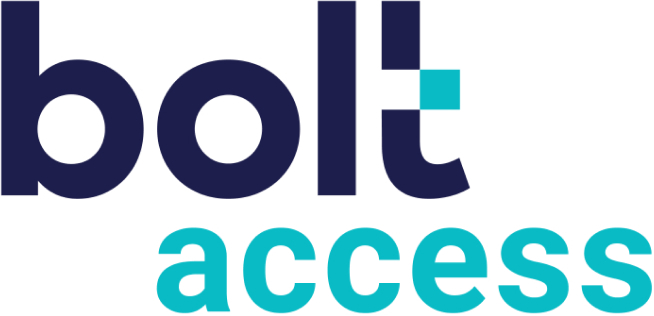
"You can’t reach a goal if you never set one. But for an independent insurance agent, figuring out how to set the right sales goals can feel daunting. Entrepreneur R.L. Adams says people avoid setting goals for two reasons: 1) It’s work. 2) Once you set a goal, you now have the potential to fail. The thing is there’s no fail-proof goal. Risking failure is part and parcel of doing anything worthwhile. Fortunately, though, there are four strategies that independent agents can use to make failure much less likely when setting sales goals. 1. Work Backward Alyssa Gregory explains at The Balance how working backward can help people come up with workable sales goals. Working backward means beginning with a broad, distant goal — one that’s fun to get excited about. It can be anything, even something you think might take decades to do: make a million dollars, sell 100,000 policies, whatever giant goal seems inspiring. Often these big dream goals are tied up in becoming the kind of person you want to be: An innovator, a leader people look up to, a tastemaker. This kind of goal is about something more than money and numbers. That excitement can give you the motivation to pursue your next steps. Business coach Jessica Stillman explains that after you set your sights on a bright horizon, then start asking questions:
- What do I need to do to reach that big goal?
- How can I break this down into smaller, achievable tasks?
- What obstacles are currently preventing me from doing those things?
- What resources do I need to overcome those obstacles?
- What barriers are preventing me from getting those resources?
- How do I overcome those obstacles?
Continue until you’ve identified a small obstacle you can overcome today. Mariana Lenox at Success.com explains why this backward questioning process is so important: Sometimes, when sitting down and thinking these questions through, you will realize that some of your own processes are actually creating barriers to your goals. And in other cases, this thought process helps your see that you already have the resources you need to overcome initial obstacles. Business coach Melanie Duncan gets even more specific when explaining how to work backward to set sales goals. She recommends your big dream goal be a specific number, your gross revenue goal. How many sales do you need to make to get to that number? How many leads do you need to get that many sales? How many leads are you currently getting? What is preventing you from boosting your current number to the number you want? By using questions to work backward, you can plot a week-to-week plan to stick to. Eventually, that plan will connect back to the present, which brings us to the second key. 2. Understand Where You Are Now Your goals should build upon how much you’re selling now, and why. Palo Alto Software CEO Sabrina Parsons writes about the importance of having this kind of clear, detailed roadmap. In order to get a clear picture of where you’re at, salespeople need more than just raw numbers of leads and sales, she says. Otherwise, how can they build a future with more leads and sales than what they’ve currently got? It’s important to be able to answer three questions to figure out where your business stands: Who is my customer? John Jantsch at Duct Tape Marketing explains that it’s important to identify the core group of people buying a product currently before making any goals to expand your customer base. What does your most consistent demographic have in common? What problem am I solving for them, how many other people have that problem, and who else is currently addressing those problems? Once you understand your current customer base, you can use that information to estimate their potential market size, a key piece of data to create sales goals. Tx Zhuo, managing partner at Karlin Ventures, explains how to use both top-down and bottom-up market sizing strategies in order to figure out:
- the addressable market for a product, the total number of people who need that kind of product;
- and the available market, which is the percentage of people in the addressable market whose needs currently aren’t being met.
How am I connecting with current and potential customers now? Chuck Price, the founder of Measurable SEO, emphasizes measuring how much you spend on marketing and pre-sales activities like outreach and cold calls. If certain efforts cost more money and time than others, are they actually generating more leads? Do your core customers respond better to certain types of outreach over others? Once you have a handle on those questions, it’s easier to figure out how much time you should spend on specific activities each week and each month to meet sales goals. 3. Celebrate When You Achieve Sub-Goals After working backward from the vision of a big dream goal, and then investigating specific questions to figure out where their business stands now, create short-term goals to get from here to there. And once they’ve been achieved? Celebrate them! Meg Prater at HubSpot encourages people to set up goals in a sequence: meeting daily goals should lead to meeting weekly goals, which should lead to meeting monthly and quarterly goals. This sequencing produces momentum that builds on itself. As the momentum builds, it becomes easier to ramp up the short-term goals from, for example, sending 50 emails per week to 60 and then to 70. This is probably why, as John Doerr at RAIN Group shows us, setting and meeting short-term goals makes salespeople almost twice as likely to succeed in the long term — they’re motivated both to stick with it and to improve over time.4. Change Your Goals If They Become Demoralizing (Or Impossible) Some things are simply out of your control. If, for example, you lose a couple of employees and have to scramble to pick up the slack, you might fall behind on your sales growth. This is why Rod Solar, a sales trainer, emphasizes making goals that are activity-oriented rather than outcome-oriented. At the end of the day, nobody can control the final outcome because there are so many factors in play. Sales goals — like every other part of a business — have to be flexible and open to revision. Otherwise, you end up chasing unattainable goals, which bring about their own problems. As executive coach Ray Williams writes, unattainable goals often tempt people to cut corners, and they undercut our own motivation. Williams points to the book The Progress Principle, by Harvard Business professors Teresa Amabile and Stephen J. Kramer, which encourages salespeople to come up with new goals as the year progresses, rather than just at the beginning of the year, so you can meet those goals consistently and assess your progress honestly. This can prevent demoralizing, over-ambitious goals while also encouraging you to push the boundaries of your comfort zone. Further, as you get into the habit of re-assessing your sales goals, celebrating wins and analyzing what works, you create a sustainable, ongoing system for growing your business. images by: nexusplexus/©123RF Stock Photo, suphakit73/©123RF Stock Photo, rawpixel/©123RF Stock Photo"
Talk to an expert
Contact us
